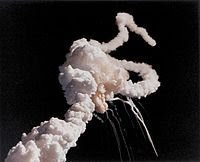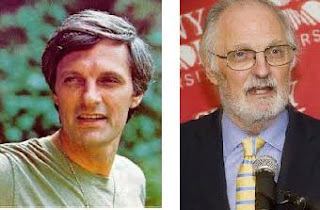History
Prior to 1970, ambulances were staffed with advanced first-aid level responders who were frequently referred to as "ambulance attendants." There was little regulation or standardized training for those staffing these early emergency response vehicles or the required equipment carried inside. Around 1966 in a published report entitled "Accidental Death and Disability: The Neglected Disease of Modern Society", (known in EMS trade as the White Paper) medical researchers began to reveal, to their astonishment, that soldiers who were seriously wounded on the battlefields of Vietnam had a better survival rate than those individuals who were seriously injured in motor vehicle accidents on California freeways. Early research attributed these differences in outcome to a number of factors, including comprehensive trauma care, rapid transport to designated trauma facilities, and a new type of medical corpsman; one who was trained to perform certain critical advanced medical procedures such as fluid replacement and airway management, which allowed the victim to survive the journey to definitive care.
During the 1960s a Los Angeles cardiologist named Walter S. Graf became concerned about the lack of actual medical care being given to coronary patients during emergency transportation to a hospital. In 1969, while serving as president of the Los Angeles Chapter of the American Heart Association, he created a "mobile critical care unit", consisting of a Chevy van, a registered nurse, and a portable defibrillator. The same year his patient Kenneth Hahn, a member of the Los Angeles County Board of Supervisors, persuaded the Supervisors to approve a pilot program to train county firefighters as "Mobile Intensive Care Paramedics". A change in state law was necessary to allow personnel other than doctors and nurses to render emergency medical care. Hahn recruited two state legislators who wrote the Wedworth-Townsend Paramedic Act of 1970, signed into law by Governor Ronald Reagan on July 15, 1970, despite opposition from doctors, nurses, and attorneys. Paramedic training began the next month at the Freeman Memorial Hospital under Graf's direction. It was the first nationally accredited paramedic training program in the United States.
Other communities in the United States were also experimenting with advanced emergency medical care. Pittsburgh's branch of Freedom House paramedics are credited as the first emergency medical technician (EMT) trainees in the United States. Pittsburgh's Peter Safar is referred to as the father of CPR. In 1967, he began training unemployed African-American men in what later became Freedom House Ambulance Service, the first paramedic squadron in the United States. Almost simultaneously, and completely independent from one another, experimental programs began in three U.S. centers; Miami, Florida; Seattle, Washington; and Los Angeles, California. Each was aimed at determining the effectiveness of using firefighters to perform many of these same advanced medical skills in the pre-hospital setting in the civilian world. Many in the senior administration of the fire departments were initially quite opposed to this concept of 'firemen giving needles', and actively resisted and attempted to cancel pilot programs more than once. In Seattle, the Medic One program at Harborview Medical Center and the University of Washington Medical Center, started by Leonard Cobb, M.D., began training firefighters in CPR in 1970.[ Dr. Eugene Nagel trained city of Miami firefighters as the first U.S. paramedics to use invasive techniques and portable defibrillators with telemetry in 1967. Dr. Jonathan Wasserberger helped actualize the teaching curriculum associated with this innovative training in 1973.
Elsewhere, the novel approach to pre-hospital care was also evolving. Portland's Leonard Rose, M.D., in cooperation with Buck Ambulance Service, instituted a cardiac training program and began training other paramedics. Baltimore's R. Adams Cowley, the father of trauma medicine, devised the concept of integrated emergency care, designing the first civilian Medevac helicopter program and campaigning for a statewide EMS system. Other communities that were early participants in the development of paramedicine included Jacksonville, Florida, Pittsburgh, Pennsylvania (in an expanded program), and Seattle, Washington (in an expanded program). In 1972 the first civilian emergency medical helicopter transport service, Flight for Life opened in Denver, Colorado. Emergency medical helicopters were soon put into service elsewhere in the United States. It is now routine to have paramedic and nurse-staffed EMS helicopters in most major metropolitan areas. The vast majority of these aeromedical services are utilized for critical care air transport (inter-hospital) in addition to emergency medical services (pre-hospital).
A television producer, working for producer Jack Webb, of Dragnet and Adam-12 fame, was in Los Angeles' UCLA Harbor Medical Center, doing background research for a proposed new TV show about doctors, when he happened to encounter these 'firemen who spoke like doctors and worked with them'. This novel idea would eventually evolve into the Emergency! television series, which ran from 1972–1977, portraying the exploits of a new group called 'paramedics'. The show captured the imagination of emergency services personnel, the medical community, and the general public. When the show first aired in 1972, there were only 6 full-fledged paramedic units operating in 3 pilot programs (Miami, Los Angeles, Seattle) in the whole of the United States. No one had ever heard the term 'paramedic'; indeed, it is reported that one of the show's actors was initially concerned that the 'para' part of the term might involve jumping out of airplanes! By the time the program ended production in 1977, there were paramedics operating in every state. The show's technical advisor was a pioneer of paramedicine, James O. Page, then a Battalion Chief responsible for the Los Angeles County Fire Department 'paramedic' program, but who would go on to help establish other paramedic programs in the U.S., and to become the founding publisher of the Journal of Emergency Medical Services.
Throughout the 1970s and 1980s, the field continued to evolve, although in large measure, on a local level. In the broader scheme of things the term 'ambulance service' was replaced by 'emergency medical service' to reflect the change from a transportation system to a system that provides actual medical care. The training, knowledge base, and skill sets of both paramedics and emergency medical technicians (both competed for the job title, and 'EMT-Paramedic' was a common compromise) were typically determined by what local medical directors were comfortable with, what it was felt that the community needed, and what could actually be afforded. There were also tremendous local differences in the amount and type of training required, and how it would be provided. This ranged from in-service training in local systems, through community colleges, and ultimately even to universities. During the evolution of paramedicine, a great deal of both curriculum and skill set was in a state of constant flux. Permissible skills evolved in many cases at the local level, and were based upon the preferences of physician advisers and medical directors. Treatments would go in and out of fashion, and sometimes, back in again. The use of certain drugs, Bretylium for example, illustrate this. In some respects, the development seemed almost faddish. Technologies also evolved and changed, and as medical equipment manufacturers quickly learned, the pre-hospital environment was not the same as the hospital environment; equipment standards that worked fine in hospitals could not cope well with the less controlled pre-hospital environment.
Physicians began to take more interest in paramedics from a research perspective as well. By about 1990, most of the 'trendiness' in pre-hospital emergency care had begun to disappear, and was replaced by outcome-based research and evidence-based medicine; the gold standard for the rest of medicine. This research began to drive the evolution of the practice of both paramedics and the emergency physicians who oversaw their work; changes to procedures and protocols began to occur only after significant outcome-based research demonstrated their need. Paramedics became increasingly accountable for their errors as well, and these too led to changes in procedure. Such changes affected everything from simple procedures, such as CPR, to changes in drug protocols and other advanced procedures. As the profession of paramedic grew, some of its members actually went on to become not just research participants, but researchers in their own right, with their own projects and journal publications.
If you want to read a lot more, go here: https://en.wikipedia.org/wiki/Paramedics_in_the_United_States
It doesn't matter when you get a craving for our Bacon Corn Bread, this fun twist on a Southern favorite is good anytime of the year! Serve it slathered in butter during the summer, or alongside steaming chili in the winter; start your day with a bacon-y breakfast bread, or end it with the perfect dinner side. This easy corn bread recipe is going to be a yummy part of any meal, anytime!
- 1 cup sour cream
- 1 cup milk
- 1 egg
- 3 tablespoons butter, melted
- 1 1/2 cups yellow cornmeal
- 1/4 cup all-purpose flour
- 1/4 cup real bacon bits
- 2 tablespoons sugar
- 1 teaspoon baking powder
- 1/2 teaspoon baking soda
- 1/2 teaspoon salt
- Preheat oven to 400º. Coat an 8-inch square baking dish with cooking spray.
- In a large bowl, whisk sour cream, milk, egg, and butter. Add remaining ingredients and whisk until mixed. Pour batter into baking dish.
- Bake 25 to 30 minutes or until a wooden toothpick inserted in center comes out clean. Let cool 15 minutes, then cut into squares and serve warm.
breaks apart after liftoff killing all seven astronauts on board.

And births this date include....









